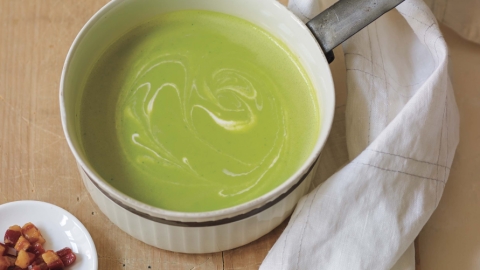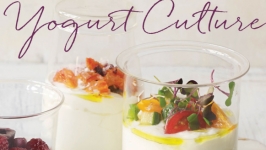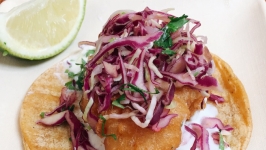Yogurt’s Cultural Evolution
Photography by ©Ellen Silverman
Step into the dairy aisle in any Silicon Valley supermarket—really, any supermarket in most of the United States—and you’ll be bombarded with yogurt. Not just the fruity yogurt you may have grown up with, but yogurt in so many styles it boggles the mind.
There’s Icelandic yogurt, Australian yogurt, Bulgarian yogurt. There’s lactose-free yogurt and vegetable yogurt; yogurt flavored like key lime pie or pumpkin cheesecake; yogurt with candy mix-ins. There’s whipped yogurt and yogurt in tubes. Yogurt made from goat milk, from coconut milk, from soy. Yogurt in wee glass jars, tall plastic bottles and squeezable pouches.
With so many varieties on today’s store shelves, it’s easy to forget the ancient roots of one of the world’s simplest, most remarkable foods.
Because yogurt is so old, it’s tough to lock down the moment of its birth, but most believe it was discovered by accident in Neolithic times; some date it back even earlier. We do know that for thousands of years humans have been eating yogurt—essentially, milk fermented by heat-seeking (thermophilic) bacteria that feast on lactose, or milk’s natural sugars. This fermentation process creates lactic acid, which drops the milk’s pH, changes its texture, makes it taste tart and preserves it, extending its usability—something especially important in pre-refrigeration times.
In many countries, yogurt is still bound tightly with tradition. You’ll find sheep yogurt in clay pots (in parts of Turkey and Greece); yak milk yogurt (in Nepal); and yogurt made from day-old injera, a teff-based, spongy fermented flatbread (in Eritrea). And that’s just a start. Yogurt’s use in cooking is just as widespread and tends to skew more savory than sweet. Think of the curries and raitas of India and Pakistan; the fizzy, sparkling, sippable doogh of Iran; the salty, cheeselike labneh enjoyed throughout the Middle East.
Here in the United States, part of our love affair with yogurt stems, no doubt, from its considerable health benefits. Yogurt is a rich source of calcium, probiotics and America’s favorite nutrient: protein. Ultra-thick Greek-style yogurts boast even more protein than their traditional counterparts (between 10 and 20 grams per serving, sometimes more). Greek yogurt is also lower in lactose than unstrained yogurt, as much of the lactose drains away in the yogurt’s cloudy whey, making it appropriate for some who avoid other dairy products due to lactose intolerance.
It’s easy to forget that Greek yogurt is relatively new on the American market. The Greece-based Fage brand first hit US shores in 1998; Chobani was founded in New York by Turkish entrepreneur Hamdi Ulukaya in 2005.
I distinctly remember my first encounter with Greek yogurt, and if you traveled to Greece years ago, like I did, perhaps you do, too.
The year was 1994. My husband and I quit our jobs, bought rail passes, and spent two months touring Europe on the cheap: sleeping in youth hostels and on trains, eating simple meals, and trying to avoid spending money. After six weeks, we decided to splurge, making our way over several days to a pricy hotel for a single night. We were Santorini-bound, off to the Greek island famed for its staggering cliffs and whitewashed buildings.
And it was worth the money. For the hot shower, after weeks of accumulated grime. For the stunning sea and spectacular sunsets. And for the breakfast, which included a bowl of thick, lush sour cream. My husband said it was yogurt. He was sure of it, in fact. But I told him he was wrong, couldn’t possibly be right, and that was pretty much that.
Of course, he was right, and 19 years later, in 2013, I made my way back to Greece, ready to learn as much as I could about a food I’d come not only to love but to research deeply, to truly understand.
For those who love yogurt but are accustomed to buying small, single-serving containers and haven’t veered beyond its convenience-food, snack-y format, it’s time to embrace what the rest of the world already knows: Cooking with plain yogurt (traditional or Greek) is not only easy, but exciting. It’s the ultimate blank canvas, able to be sweetened and spiced, simmered and chilled, blended and frozen.
Springtime is the perfect season to whisk creamy yogurt through a delicate Asparagus-Pea Soup with Crispy Pancetta, or to roast up a Strawberry-Rhubarb Compote gently bolstered with cinnamon and lime (See recipes that follow). Plain yogurt knows no bounds, so make grand use of our richly abundant farmers markets and pair your bounty with yogurt in everything from dressings to dips, from sauces to desserts to refreshing, cooling drinks.
For a food so ancient, yogurt shines brighter now than at any other time in its storied past. Taste around to find a brand you love, or delve a little deeper and try making your own. If nomads could do it with nothing more than goatskin sacks, you’re more than well-equipped in our high-tech valley.
Cheryl Sternman Rule is an award-winning, San Jose–based food writer and author of Yogurt Culture: A Global Look at How to Make, Bake, Sip, and Chill the World’s Creamiest, Healthiest Food (Houghton Mifflin Harcourt, 2015), available now. Learn more at CherylSternmanRule.com.
Burlingame’s Yogurt-Centric Café
When I first stumbled on Jougert Bar in Burlingame in the summer of 2014, I couldn’t believe my luck. I’d just written a cookbook touting creative uses of yogurt, and here was a local business whose eclectic menu reflected my own passion and taste.
Co-owners Robert Tabz and Vincent Cusimano opened the café on February 1, 2014. Located on bustling Burlingame Avenue, a stone’s throw from Kara’s Cupcakes, Books Inc. and a gleaming Apple store, the small eatery boasts warm brown tones, candles on the tables and Pinterest-worthy inspirational quotes on the walls. (One reads: “Approach love & cooking with reckless abandon!”) It’s clearly a local venture, not some cookie-cutter outpost of an international chain.
Tabz, 40, and Cusimano, 36, met at Oracle, where they had offices next to each other. (Cusimano still works there, in fact.) Cusimano was born in San Jose and raised in Fresno; Tabz is Persian by birth, but he was raised in a long list of countries, including Turkey, Azerbaijan, France, Germany and several others.
The Jougert Bar menu features soups, sandwiches, salads, and authentic Turkish coffee scented with cardamom. But the menu’s star is clearly the sweet and savory Jougert Bowls. With names like Sedi’s Touch (an homage to Robert’s late mother), featuring a Persian-inspired combo of Greek yogurt, cucumber, walnuts, raisins, mint, dill and rose, and the sophisticated Orange Blossom, with Greek yogurt, orange zest, dark chocolate, pistachios and honey, the offerings are bold and unique. The pair sources its largely organic produce as much as possible from the local farmers market.
Those who love fresh Greek yogurt (this is not fro-yo) and crave something decidedly healthful, with a global sensibility but roots right here in the region, can get their fix at 1115 Burlingame Ave. 650.343.1110.







